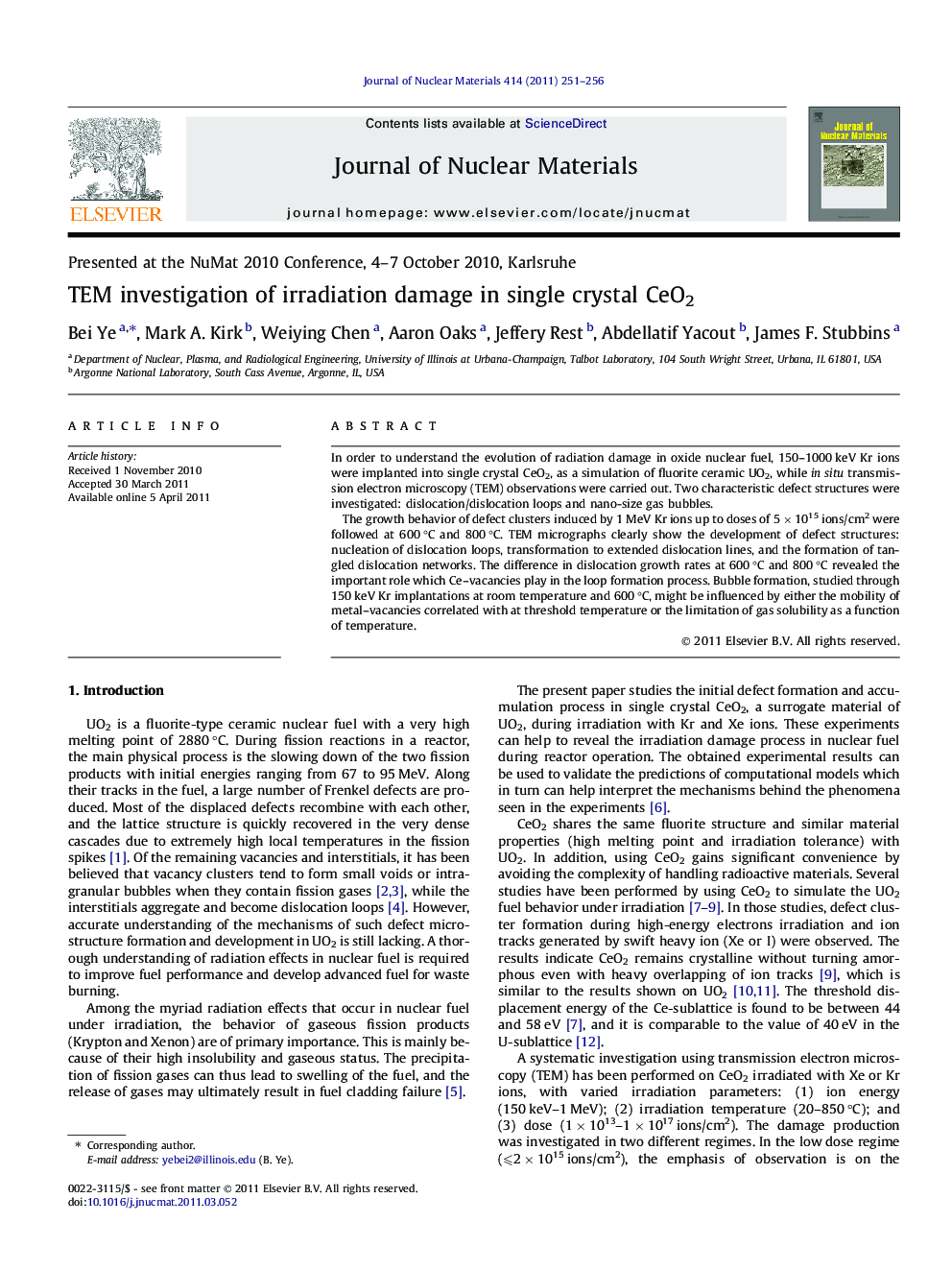| Article ID | Journal | Published Year | Pages | File Type |
|---|---|---|---|---|
| 1566691 | Journal of Nuclear Materials | 2011 | 6 Pages |
In order to understand the evolution of radiation damage in oxide nuclear fuel, 150–1000 keV Kr ions were implanted into single crystal CeO2, as a simulation of fluorite ceramic UO2, while in situ transmission electron microscopy (TEM) observations were carried out. Two characteristic defect structures were investigated: dislocation/dislocation loops and nano-size gas bubbles.The growth behavior of defect clusters induced by 1 MeV Kr ions up to doses of 5 × 1015 ions/cm2 were followed at 600 °C and 800 °C. TEM micrographs clearly show the development of defect structures: nucleation of dislocation loops, transformation to extended dislocation lines, and the formation of tangled dislocation networks. The difference in dislocation growth rates at 600 °C and 800 °C revealed the important role which Ce–vacancies play in the loop formation process. Bubble formation, studied through 150 keV Kr implantations at room temperature and 600 °C, might be influenced by either the mobility of metal–vacancies correlated with at threshold temperature or the limitation of gas solubility as a function of temperature.
